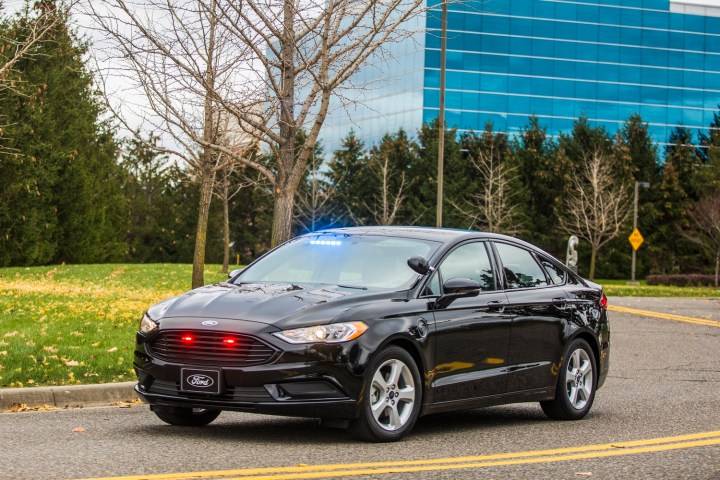
Ford’s latest police car is based on the Fusion Energi plug-in hybrid. Officially known as the Special Service Plug-In Hybrid Sedan, it offers limited all-electric range, albeit at the expense of being a “pursuit-rated” vehicle that can participate in high-speed chases. Despite that limitation, Ford says the plug-in hybrid police car is perfect for “police and fire chiefs, detectives, and other government personnel whose jobs don’t require a pursuit-rated vehicle.”
With a full charge, the Special Service Plug-In Hybrid Sedan can travel up to 21 miles on electricity alone at speeds up to 85 mph, just like a civilian-spec Fusion Energi. Both versions share the same powertrain, consisting of a 2.0-liter Atkinson-cycle four-cylinder gasoline engine and electric motor, with a 7.6-kilowatt-hour lithium-ion battery pack providing electricity.
Recharging the battery pack takes 2.5 hours using a dedicated 240-volt Level 2 AC charging station, but Ford believes simply plugging the car into a standard 120-volt AC socket will suffice in most cases. That’s because the plug-in hybrid has a smaller battery pack than an all-electric car, cutting the charging time. Charging will still take substantially longer using that method than with a Level 2 station, though.
Changes to the interior include front seats with less bolstering to accommodate police officers wearing equipment belts, mounting points for computers and other equipment, red and white task lighting, a police engine-idle feature, police-specific wheels, and an auxiliary power distribution box in the trunk. The options list includes things like a “dark-car feature” that dims interior lighting during surveillance, a rear-door control disabling feature, and multiple emergency lighting packages.
Ford will start taking orders for its first plug-in hybrid police car in December. The automaker also offers a police version of the Fusion Hybrid, which doesn’t have a plug, but is pursuit rated. Ford claims the Fusion Hybrid police car is the first vehicle of its kind to get that rating.
Editors' Recommendations
- Dubai Police to deploy driverless patrol cars with AI smarts
- Ford and VW close down Argo AI autonomous car unit
- Ford releases self-driving car data to encourage further research
- Ford could build its next Mustang-inspired electric car on Volkswagen bones
- Ford’s upcoming electric cars will share VW’s Electrify America charging network


